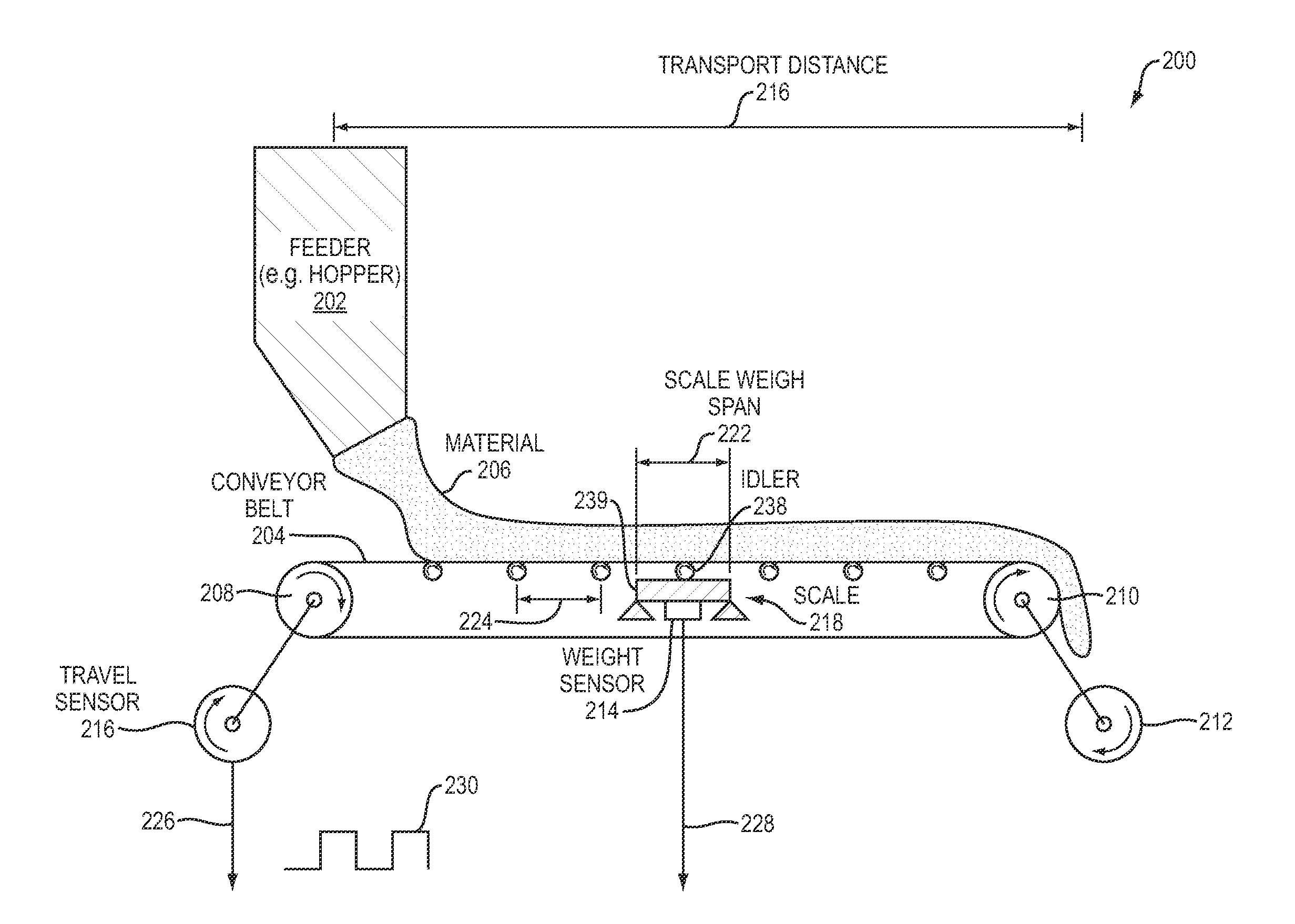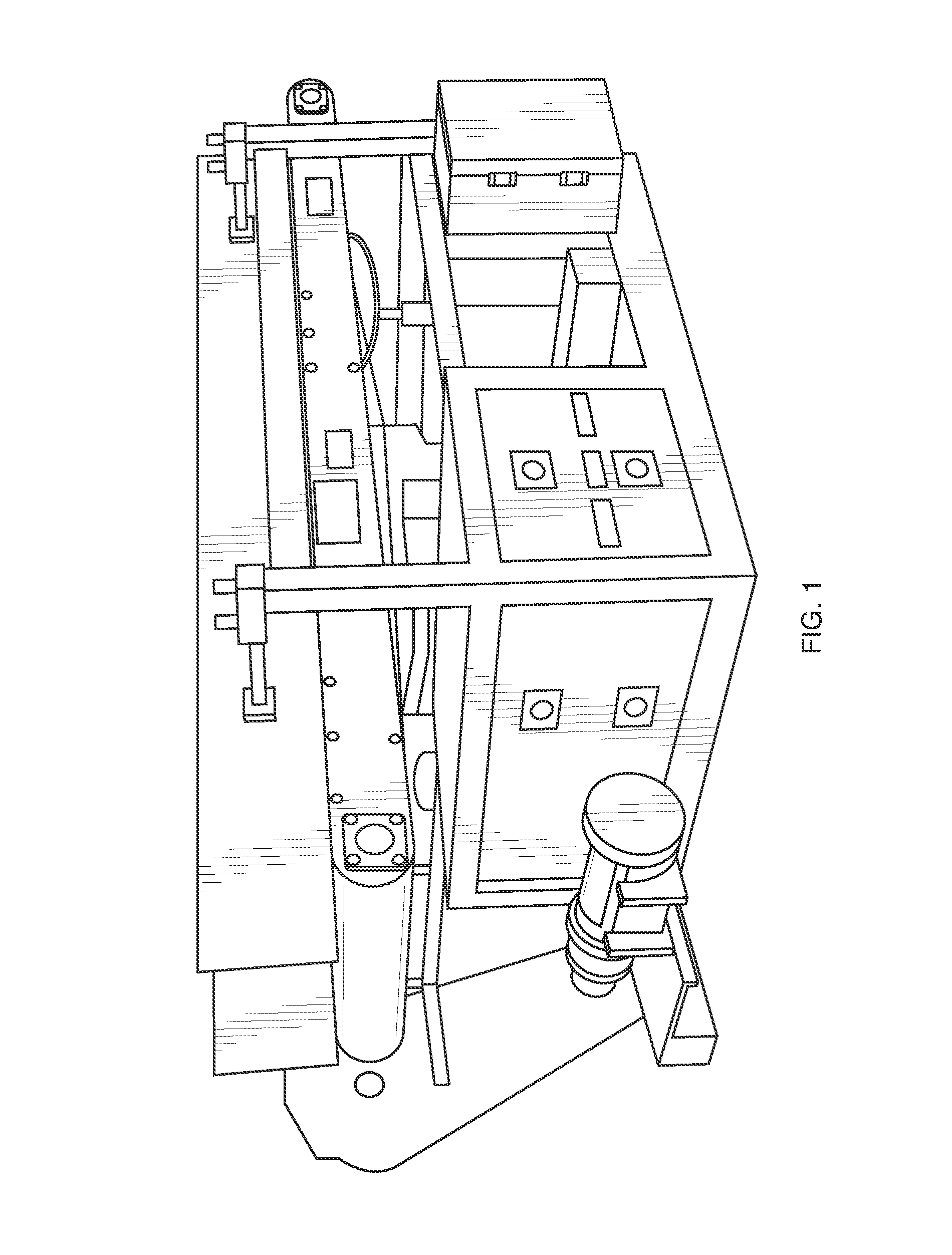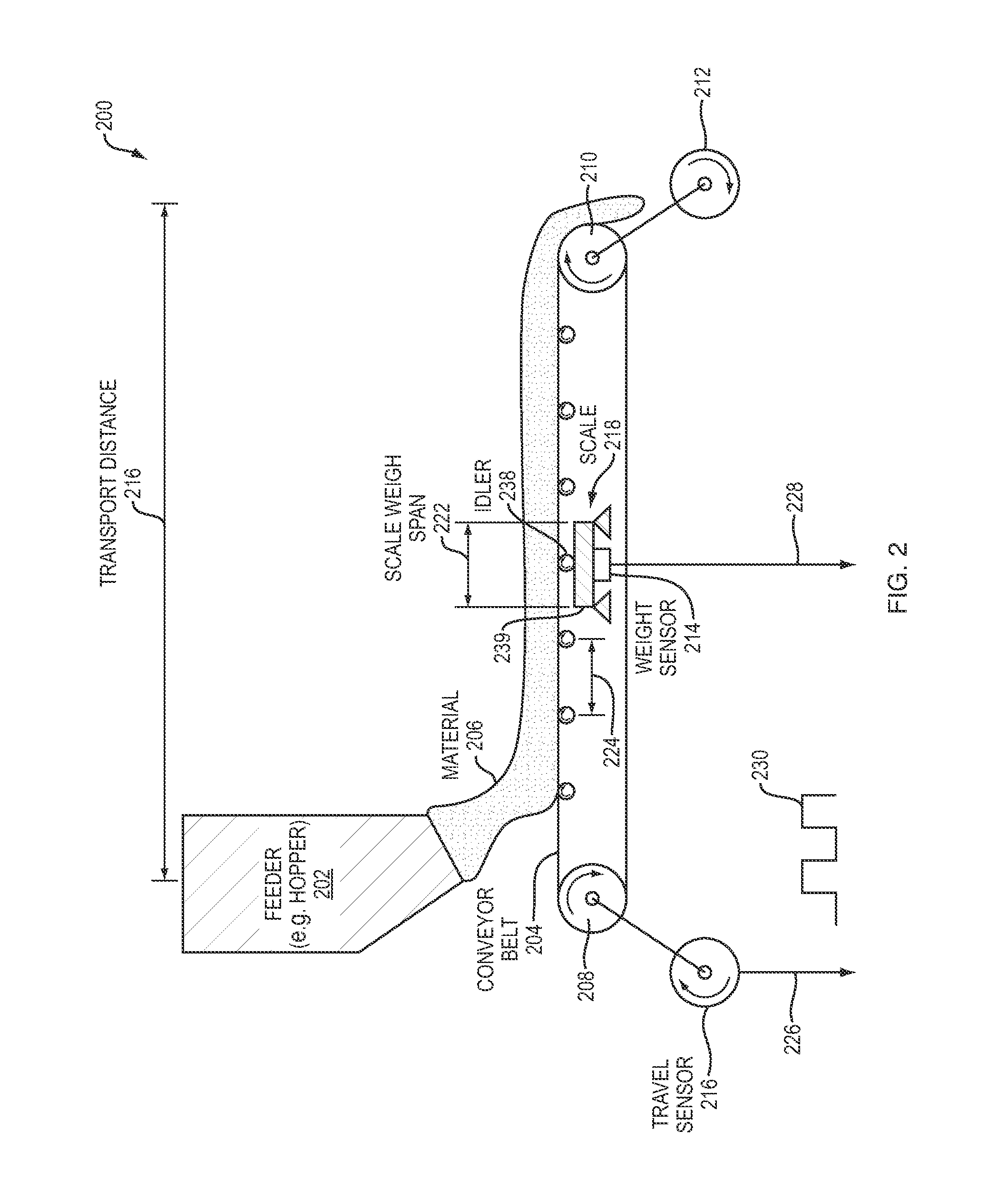System and methods for belt conveyor weighing
a belt conveyor and belt conveyor technology, applied in the direction of continuous material flow weighing apparatus, liquid/fluent solid measurement, instruments, etc., can solve the problem of limited load averaging ability of short weigh spans
- Summary
- Abstract
- Description
- Claims
- Application Information
AI Technical Summary
Benefits of technology
Problems solved by technology
Method used
Image
Examples
Embodiment Construction
[0053]A description of example embodiments of the invention follows.
[0054]Length of a weigh span to weigh material on a conveyor belt plays a useful role in establishing weighing accuracy and control response limits of a belt weighing system. Long weigh spans are more accurate for weighing the material. However, because of their longer transport time, long weigh spans are not as responsive to rapid loading changes as short weigh spans.
[0055]Because short weigh spans have improved responsiveness due to their short transport time, short weigh spans tend to be more useful for certain control and alarming functions than long weigh spans. However, short weigh spans are more reactive to many extraneous influences (e.g., belt splice impacts, roller wobble effects, roller unbalance, miscellaneous belting irregularities, or non-uniformities such as lack of flatness of the belt, and non-uniform weight) because they are more responsive to rapidly changing conditions.
[0056]Novel system and meth...
PUM
 Login to View More
Login to View More Abstract
Description
Claims
Application Information
 Login to View More
Login to View More - R&D
- Intellectual Property
- Life Sciences
- Materials
- Tech Scout
- Unparalleled Data Quality
- Higher Quality Content
- 60% Fewer Hallucinations
Browse by: Latest US Patents, China's latest patents, Technical Efficacy Thesaurus, Application Domain, Technology Topic, Popular Technical Reports.
© 2025 PatSnap. All rights reserved.Legal|Privacy policy|Modern Slavery Act Transparency Statement|Sitemap|About US| Contact US: help@patsnap.com



